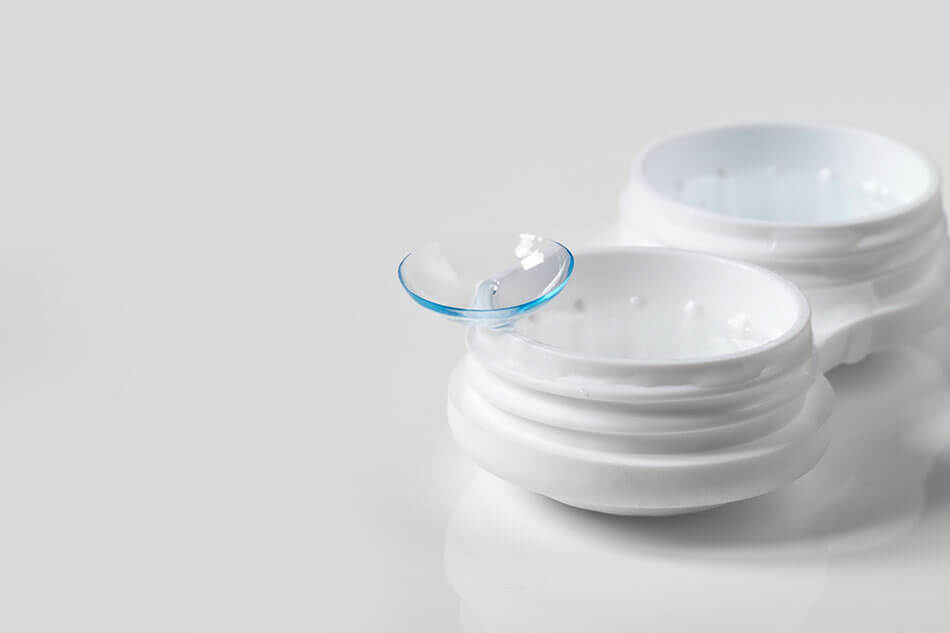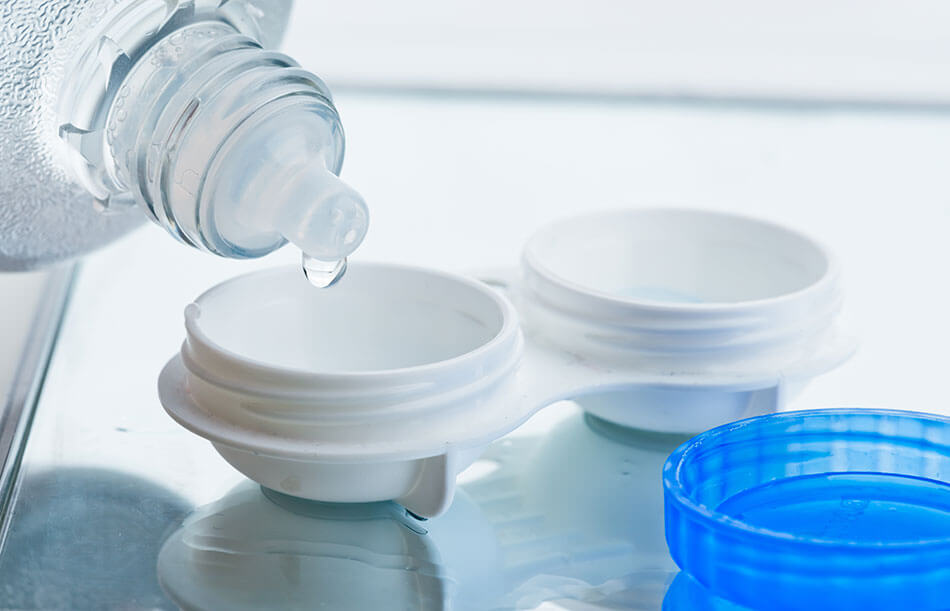How to Buy Contact Lenses: A Guide for Beginners

Wearing contact lenses is an easy and comfortable way to correct your vision without relying on glasses or surgery. However, if you are new to contacts, the variety of lens types, materials, and care routines can be overwhelming.
This beginner’s guide will walk you through everything you need to know about how to buy contact lenses. You will learn about the different types, how long each lasts, and what features to look for when choosing the right pair for your eyes.
Types of Contact Lenses

The first step in buying contact lenses is understanding the types available. The material and structure of the lens play a major role in comfort, clarity, and maintenance.
PMMA (Hard Lenses)
Polymethyl methacrylate, or PMMA lenses, are otherwise known as hard contact lenses. PMMA is a rigid plastic that is also used in the construction of shatterproof glass or Plexiglas.
PMMA contact lenses are less popular now because they do not transmit oxygen to the eye. This makes it more difficult to get used to and can dry out the eyes more easily.
Gas Permeable (GP)
Gas permeable lenses resemble PMMA lenses but allow more oxygen into the eye. They are also easier to fit than PMMA lenses and provide sharper vision than their silicone hydrogel counterparts.
It may take a little time to adjust to these lenses, but most people report that they are just as comfortable as soft contacts in the long-run.
Soft Lenses
Soft contact lenses generally feel comfortable immediately. They consist of gel-like plastics that contain water, or hydrogels. The lenses conform to the eye easily with a thin and pliable material.
Silicone Hydrogel
These advanced soft lenses have recently become the most popular lens in America. In fact, 68% of contact lens fittings in 2014 were for silicone hydrogel lenses!
They allow for more oxygen to reach the cornea than other types of soft contact lenses and can be more comfortable to wear. With more oxygen flow, this type of contact lens reduces the risks of hypoxia or oxygen deficiency. As a result, this lessens your chance of eye infections and irritation as well.
Hybrid
Hybrid lenses are gas permeable at the center with a hydrogel or silicone hydrogel outer edge. They are not as popular with contact lens wearers because they are more difficult to fit and slightly more expensive than soft lenses. However, they are just as comfortable as their silicone hydrogel rivals.
Length of Wear for Contacts

How long you plan to wear and maintain your lenses will influence your choice. Contact lenses come in several wear schedules.
Daily Disposables
Daily disposable contacts are worn only once for a day and then thrown away. Some people may think of this as wasteful, but it can be a convenient way to avoid getting bacteria on your lenses from improper care.
If you think you’ll have trouble cleaning your contacts after each use, daily disposable lenses may suit your lifestyle.
Weekly Wear
Weekly wear contacts are for regular daily use and cleaned nightly for a week before disposal. Many people prefer weekly wear lenses because the risks of bacterial deposits forming on the lenses are minimal.
Monthly Wear
Monthly wear lenses are often an economical choice for people who wear contacts. These lenses are worn daily for one month before disposal.
You should clean them proficiently and store them away each night. Although monthly wear contacts may be easier on your wallet, you might have to devote more time to them. Cleaning them each night reduces your chances of infection and discomfort.
Things to Consider When Buying Contacts

Once you’ve decided on the type of contacts you want, the purchase process goes beyond searching for the best brand. There are other features available that could make a difference in how you buy your contacts.
Fitting
Your contact lens prescription includes several measurements that ensure proper fit and vision correction. Common parameters include:
- Spherical contact lenses: for nearsightedness/farsightedness
- Toric contact lenses: for astigmatism
- Multifocal lenses: for both nearsightedness AND farsightedness
- Diopters (D/dpt./PWR): (+) means farsighted, (-) means nearsighted
- Base curve (BC): parameter of your eye for the best lens fit
- Diameter (DIA): the size of the lens
Always use your current prescription when placing an order online to ensure comfort and visual accuracy.
Custom Lenses
If you're having a difficult time finding contact lenses that fit you correctly, you may be a candidate for custom contact lenses. As lenses made to order for your specific visual needs, they will not only give you better comfort, but also sharper visual acuity.
UV-Blocking Lenses
Your eyes are just as susceptible to the sun's ultraviolet rays as your skin. That's why you should wear UV-blocking lenses if you'll be in the sun for extended periods of time.
These contacts can block out up to 97% of UVB and 81% of UVA rays. But you should always wear sunglasses in addition to UV-blocking lenses for maximum protection. Contact lenses cannot protect the entire eye surface or the surrounding areas.
Color Contact Lenses
Even if you don't need contacts to correct your vision, you can order color contact lenses to enhance or even change your natural eye color. You will need a prescription from a licensed eye doctor.
You may also find these lenses in your medical prescription to correct your vision and have a little fun at the same time.
Lenses for Dry Eyes
Some people experience overwhelming dry eyes due to allergies or other health conditions. There are contacts specifically designed to reduce the risk of lens-related dry eye issues.

Prosthetic Lenses
Patients who have sustained injury or disease to the eye use prosthetic lenses. These special lenses mask disfigurements and improve remaining functionality in the eye. This type of lens comes in either gas permeable or soft lenses.
Tips for Buying Contact Lenses Online
Buying contact lenses online can save time and money if you choose a reputable retailer. Always make sure the seller:
- Requires a valid prescription
- Offers FDA-approved contact lenses
- Provides clear return and exchange policies
- Lists customer reviews for transparency
PerfectLensWorld offers a wide selection of authentic, brand-name contact lenses at competitive prices. You can order with confidence knowing that your lenses are verified, safe, and shipped directly to your door.
Final Thoughts
Buying contacts and shopping for contacts are very different things. So now that you know how to buy contact lenses, you can start shopping.
Don't hesitate to ask your ophthalmologist for a 30-day trial pair while you compare prices and find the best deal. You'll probably save money by shopping online in lieu of ordering contacts from your doctor. Not to mention, you’ll also get the added convenience of having your contact lenses shipped directly to your doorstep.
FAQ: How to Buy Contact Lenses
Do I need a prescription to buy contact lenses online?
Yes. Federal law requires all contact lens sales to be backed by a valid prescription from an eye care professional.
How do I know which contact lenses are right for me?
Your optometrist can determine the best type of lenses based on your vision, lifestyle, and eye health. Once you have your prescription, you can compare different brands and materials.
Are daily disposable lenses better than monthly ones?
Daily lenses are more hygienic and convenient, while monthly lenses are more economical. The right choice depends on your comfort level and how often you plan to wear them.
Can I buy color contact lenses without vision correction?
Yes, but you still need a prescription to ensure they fit safely. Even cosmetic lenses are regulated medical devices.
Is it cheaper to buy contact lenses online?
In most cases, yes. Online retailers like PerfectLensWorld offer lower prices than in-office purchases and often provide free shipping or discounts for bulk orders.
